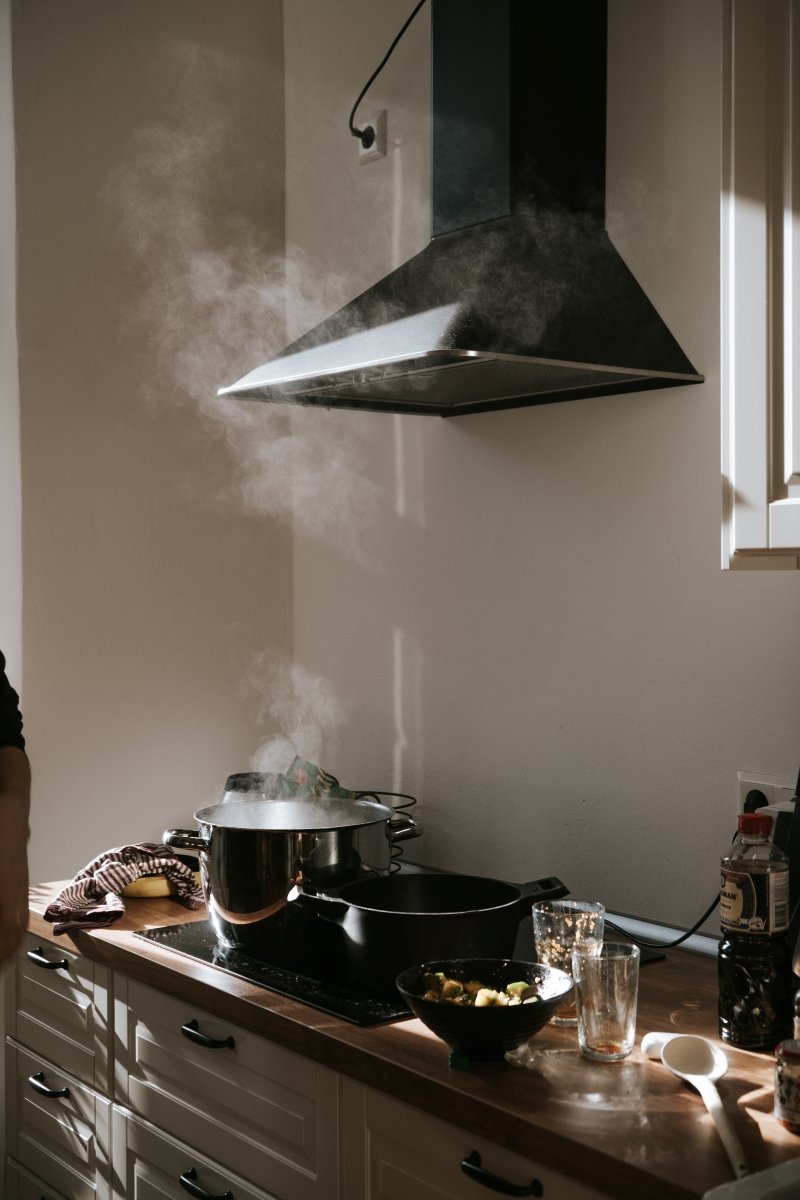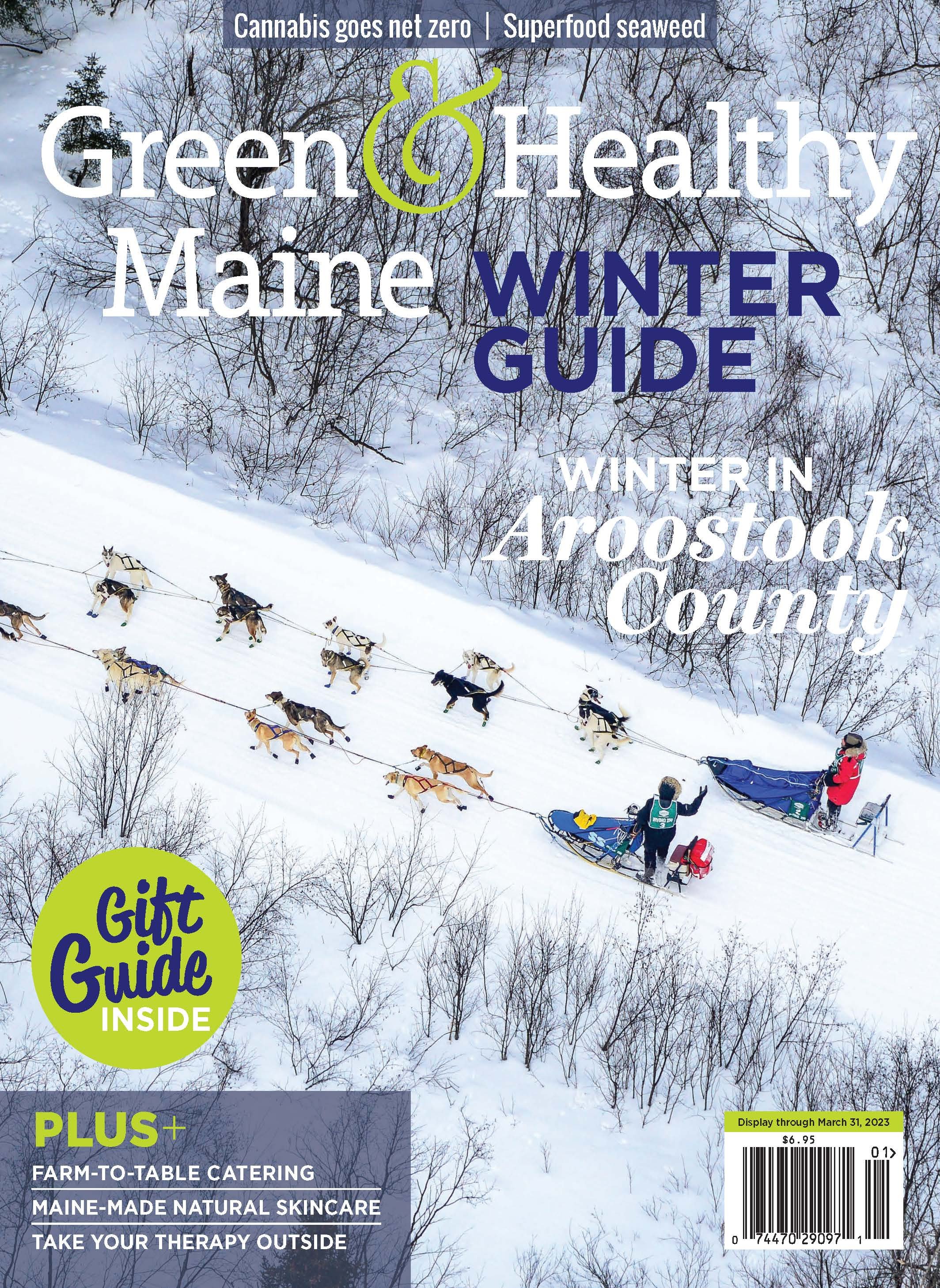Cooking and indoor air quality: reducing pollution in your kitchen
By Christine G. Crocker
Executive Director, Maine Indoor Air Quality Council
Cooking is something everybody does inside their home. But did you know that cooking indoors can put a lot of pollutants and chemicals into your indoor air? In fact, cooking activities can produce more pollutants indoors than the U.S. Environmental Protection Agency says is healthy outdoors. Fortunately, there are some strategies you can follow to help reduce the amount of pollutants released into your home.
How does cooking create indoor pollution?
Pollutants from cooking are created in two ways:
1. From your cooking appliance:
Gas range burners and ovens produce carbon monoxide (an odorless, tasteless gas that in high concentrations can be deadly); nitrogen oxides (a severe lung irritant), formaldehyde (a carcinogen and irritant), and small and ultrafine particulate matter (which can induce coughs, worsen asthma, and cause lung inflammation).
Electric range burners and ovens can produce small and ultra-fine particulate matter.
2. From the process of cooking, including pollutants from the food itself:
This can be related to the type of pan and how you use it (with/without lid, cooking temperature).
A vast array of chemicals and particles from food products, especially cooking oils and meat.
Moisture and odors released during cooking.
USING A RANGE HOOD TO REDUCE POLLUTANTS DURING COOKING
A properly installed, vented-to-the-outdoors range hood is the best method to remove cooking pollutants from your home and protect your family from short- and long-term health effects from cooking activities. Range hoods should be used every time the cooktop burners or oven are used.
How do you know if your current range hood is vented outdoors?
Most outdoor vented range hoods will have a cubby in the wall above the hood. Open the cubby to see if there’s a vent duct going from the range hood to the ceiling or wall.
Turn on the range hood fan. If you feel the air blowing on your face or hair, it isn’t vented outdoors.
BUYING A RANGE HOOD
When purchasing a range hood, look for products that are:
Efficient: With a capture efficiency (CE) of 80% or more, as rated by the Home Ventilating Institute (HVI)
Quiet: HVI noise rating of less than 3 sones at an airflow rate of 200 CFM or more
Multi-speed So you can adjust fan rate and noise as needed
Don’t have a range hood that’s vented outdoors? As an interim solution, place a window fan blowing out of an open window, preferably a kitchen window. Like a range hood, use this every time you cook indoors.
Learn more about range hood selection and installation.
TIPS to reduce cooking pollutants
Here are some ways you can reduce cooking pollutants and protect your family in your indoor space.
Monitor pollutants. Install a UL-listed carbon monoxide detector at least five to as much as 20 feet from your gas range, at a level higher than your cooktop. Consider using an all-in-one indoor air quality monitoring device to help monitor other pollutants, such as humidity, particulate matter, and volatile organic compounds.
Cook on the back burner. Most range hoods suck air from the back of your stove, making the cooking on the back burner optimal for pollutant capture by the fan.
Cover your pots and pans with a lid to trap moisture and cooking fumes.
Use an induction cooktop. It cooks faster at lower temperatures without fumes from burners and is more energy efficient.
Reduce cooking temperature. Avoid grilling, charring, burning, and frying at high temperatures and over prolonged periods, especially when cooking meat. Take these activities outside if you have an outdoor grill. Using lower cooking temperatures and marinating meat reduces the formation of potent carcinogens.
Avoid pans with nonstick coatings. These can add extra chemicals into the indoor environment.
Use your microwave to pre-cook or cook food.
Shut the doors to other areas of your home when cooking to prevent cooking pollutants from entering those areas.
Clean up spills before they burn and cause pollutants.
If you have a self-cleaning oven, evacuate the house during cleaning and run the range hood on high throughout the full cleaning cycle.
This article appeared in the 2022 Green & Healthy Maine WINTER Guide. Subscribe today!
Find Maine experts that specialize in healthy, efficient homes in the Green Homes Business Directory.



